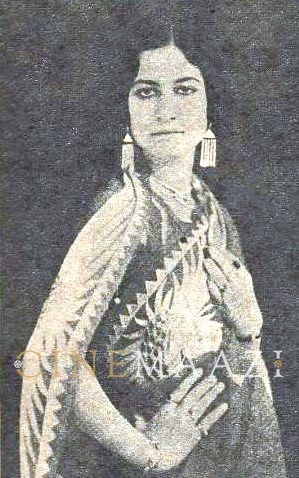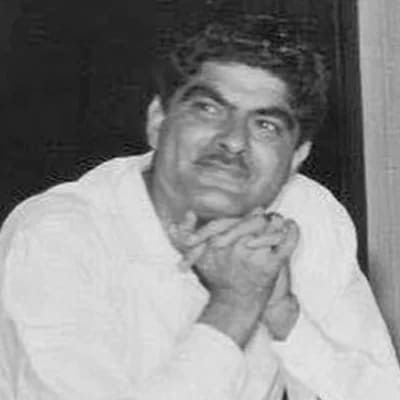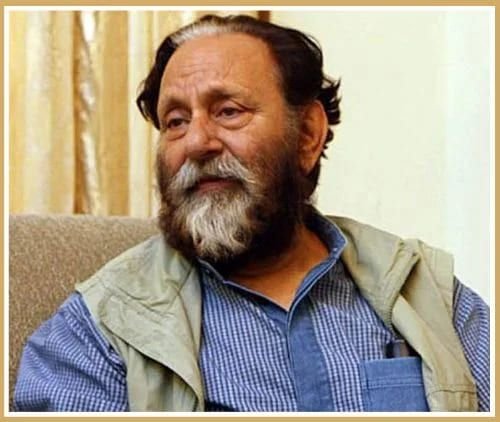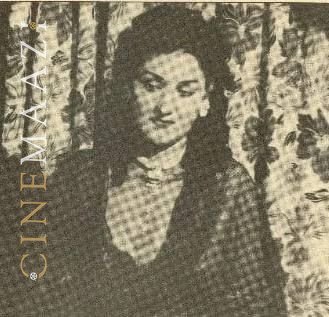Jahanara Kajjan

Subscribe to read full article
This section is for paid subscribers only. Our subscription is only $37/- for one full year.
You get unlimited access to all paid section and features on the website with this subscription.
Not ready for a full subscription?
You can access this article for $2 , and have it saved to your account for one year.
- Born: 1910 (Approximate)
- Died: December 1945
- Primary Cinema: Hindi
- Parents: Suggan and Nawab Chammi Saheb of Bhagalpur
Singing star and actress of the 1930s, Jahanara Kajjan was celebrated as the ‘Lark of Hindi cinema’ and the ‘Beautiful Nightingale of Bengal Screen’. Also known as Kajjan Bai or Miss Kajjan, she was a well-known stage actress, glamorous film star, and a trend-setting fashion icon. In The Modern Girl Around the World: Consumption, Modernity, and Globalization, Priti Ramamurthy describes Kajjan as the Indian Modern Girl: 'The actress wore makeup, mascara, finely shaped lips, and bobbed hair but even though she wore no bindi (her name reveals she is Muslim), her sari and nose ring signified her aesthetic hybridity, neither purely Western nor purely Indian'. Undeniably talented, she enjoyed a short-lived but bright career.
She is presumed to have been born around 1910, the daughter of a professional artiste or tawaif. Kathryn Hanson, a leading scholar of South Asian theatre history, mentions in her book Stages of Life (2011), Jahanara as being the daughter of the courtesan Suggan and the Nawab of Bhagalpur.
According to the culture of the courtesans of the time, they were invited by the princely courts and aristocracy to perform at their private musical gatherings. The tawaifs, with their refined ways, offered interesting company to the elite menfolk. While marriage was not allowed in the profession, relationships with patrons were permitted. However, with the anti-nautch campaign at the start of the 20th century, many professional artistes became stage actors and gramophone singers.
Educated at home, Kajjan learnt English as well as Urdu literature. She composed poetry under the pen name Ada, with some of her poems also published in Urdu magazines. She also trained in Hindustani classical music from Ustad Hussain Khan of Patna. Gifted with a melodious voice, expertise of the ragas, as well as good looks, it wasn’t long before she found work with a Patna-based theatre company. Noting her mastery of ragas, her mellifluous voice and also her charming looks, she was hired by a theatre company at Patna. Earning a salary of Rs. 250 per show, she left audiences captivated with her singing.
Next, she joined the famous Alfred Company owned by Madan Theatres of Calcutta. Here she worked closely with the Parsi theatre great Fida Hussain, who was her director as well as her leading man. Her fame as a singer and stage actor grew further.
She was destined for greater glory with the advent of the talkies. While Alam Ara (March, 1931) took the honours for being the first talkie of India, Madan Theatres of Calcutta hit the screens a few weeks later with their talkie Shirin Farhad (1931) released in the same year. It starred the popular singing pair of the stage - Kajjan and Nissar in a story based on the stage play scripted by the renowned playwright Agha Hashar Kashmiri. The technically superior Shirin Farhad stole a march over Alam Ara. The film included 42 songs rendered by Kajjan and Nissar, and was a thumping hit. Kajjan thus took a bow as an early superstar of Hindi cinema.
She went on to feature in Laila Majnu (1931); again the film was a super hit. Directed by Kanjibhai Rathod, the film also featured Ghaznavi and Rampiary. The same year, her film Indrasabha (1931), a big-budget film with over 69 songs, made waves. ‘The Hindi Devmala [Hindi Pantheon] with the Islamic Ravaiyat' were crystallised into a plot structure that revolved around a benevolent king whose moral fibre is tested by celestial powers as they cause an apsara (a fairy) to appear before him as a fallen woman begging for mercy. With duration of three and half hours (211 minutes), the J J Madan-directorial was entirely in verse, with Kajjan rendering several songs.
She sang a host of popular songs including Toone to mora man har leeno more banke saanwaria, Chaman ko yun mere saqi ne maikhana bana diya, Kab se khadi hun terey dwar, bula le mohe balam re. Memorable films that further ensured her success as an actress include Bilwamangal (1932), Shakuntala (1932), Alibaba Aur Chalis Chor (1932), and Zehari Saanp (1933). She acted in many Madan Theatres films like Pati Bhakti (1932), Aankh Ka Nashaa (1933), Anokha Prem (1934), Rasheeda or Turki Hoor (1935) and Mera Pyara (1935). Other films she starred in include Raaj Dulari (1936) and Shaitan Ka Paash or Devil’s Dice (1936).
By the mid-1930s, further change had set in, in Hindi cinema. Song-dramas, mythological tales and Persian love stories were no longer in demand. Several film production houses—like Madan Theatres—shut shop. Kajjan herself bore the brunt of the changed scenario, wherein her classical songs and theatrical style of acting had become obsolete. With offers drying up, she later moved from Calcutta to Bombay, where the renowned Sohrab Modi helped her with acting assignments. Between 1941 and 1944, she acted in six films; however, she featured in minor roles with little opportunity to display her singing talent. Her only major release in this period was Modi’s own Prithvi Vallabh (1943). A historical drama directed by Sohrab Modi, made under the Minerva Movietone banner, the story was an adaptation of K. M. Munshi's book Prithivivallabh written in 1920. The film starred Sohrab Modi, Durga Khote, Sankatha Prasad, Kajjan, Meena Shorey, Sadiq Ali, K N Singh and Al Nasir. The story revolves around two kings, Prithvi Vallabh (Munj) of Avantipur who is kind and just, and Tailap, a neighboring king who is cruel. With the help of his sister Mrinalvati (Durga Khote) and another neighbouring king Bhillam (K N Singh), Tailap manages to capture Prithvi Vallabh. The film follows incidents following his captivity.
A fashionable modern girl, a studio portrait of hers from the late 1920s pictures her donning dark lipstick, flapper curls and a direct gaze. It appeared in an advertisement for face powder and hair products by The Crisis (New York) 1928. The Crisis was the official publication of the NAACP (the National Association for the Advancement of Coloured People), founded in 1910 by writer and civil rights activist WEB DuBois. Fond of Western dancing, she was a regular at the Calcutta Club, part of the elite swish set. She was also known to be romantically involved with her theatre director and co-star Fida Hussain, and the handsome actor Najmul Hassan, who joined New Theatres, Calcutta after he lost his job at Bombay Talkies following his affair with the leading star Devika Rani.
Jahanara Kajjan passed away unsung, at the relatively young age of around 35, in Bombay, in 1945.
References
Sources: https://www.thehindu.com/features/friday-review/peep-into-jahanara-kajjan-a-forgotten-actor-and-a-singing-star-of-the-1930s/article8025934.ece
https://www.firstpost.com/long-reads/dastaan-e-dilrubai-remembering-jahanara-kajjan-whose-incandescence-burned-briefly-but-brightly-8149901.html
https://www.cinestaan.com/articles/2020/mar/17/24944/the-transnational-stardom-of-the-lark-of-india-jahanara-kajjan
-
Filmography (2)
SortRole
-
.jpg)
Mubarak 1941
-
Shirin Farhad 1931
-







.jpg)



